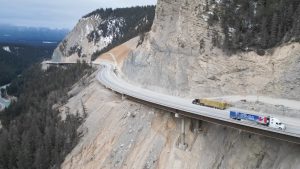Is there a country anywhere in the world that doesn’t have an infrastructure deficit?
I don’t know the answer to that question. But governments everywhere, it seems, are always unveiling fine-sounding plans to address the need to upgrade sewers and water lines, bridges, streets and roads, you name it.
The sad fact remains that things like streets and roads are upgraded because they’re something we see every day as we drive around town. The stuff we can’t see, the corroded water line, is ignored until it bursts. Then we’re annoyed because the street is flooded.
And it’s not just the flooding. A water leak can lead to serious structural damage and soil erosion; even small leaks have the potential to allow harmful contaminants into drinking water.
This is not a problem for just one or two cities. It’s a problem for all cities, including Los Angeles, where a research project now underway could well provide a solution. Canadian cities should be watching.
Los Angeles isn’t alone with its problem. But it happens to be where Wei-Min Shen is experimenting with an autonomous robot that should be able to detect damage in underground pipes.
Shen works at the Information Sciences Institute of the University of Southern California, and he and his team are developing an autonomous robot that could quickly and inexpensively detect damage in water pipes.
About two-thirds of the city’s 11,000 kilometres of water pipes are more than 60 years old and nearing the end of their useful lives.
The robot Shen and his team are developing is inserted into the water system through existing fire hydrants. Then, as it goes with the flow, it captures real-time video. Sensors collect data and log its position. There is no need to shut off the water while it works.
It’s not much to look at: a simple cylinder with a transparent midsection so one can see the electronic gadgetry tucked neatly inside.
Shen calls it “PipeFish.”
“This could be a game-changer,” Shen says. “Instead of excavating and replacing every pipe, which is a huge expense, PipeFish can narrow in on specific problems to enable repair before serious damage occurs.”
Once the device is retrieved, the data can be uploaded and analyzed to detect warning signs of defects inside the pipe.
Although many devices have been invented and used over the years, Shen says current leak-detection systems are expensive, slow to operate, and often ineffective as a sensors’ signals typically cannot pass through thick infrastructure pipes made from metal or concrete.
“Right now there is no effective way to visually inspect the inside of a pipe, so you can’t tell which section is bad. It’s guesswork,” says Shen.
PipeFish just floats along. An on-board microcomputer controls lights, sensors and a 360-degree camera that records an interior view of the pipe at a minimum of 30 frames per second. Other sensors collect additional information including flow rate, illegally dumped chemicals and flammable materials.
To handle the complex subterranean twists and turns of a large water network, Shen and his team developed PipeSnake, made up of several PipeFish tethered together using flexible joints.
Most of the field work up to now has been dry tests at one of the city’s water facilities. But early in the new year, the team plans to add water to the system and test the device in different pipes of various diameters under the city.
Ultimately, the team hopes that a “school” of PipeFish could be programmed to travel along specific paths gathering data as they swim, through every major water pipe in Los Angeles.
The information gleaned should identify risks, and help officials establish priorities for pipe repair or replacement.
“Every city in the world,” Shen says, “needs a PipeFish.”
Korky Koroluk is an Ottawa-based freelance writer. Send comments to editor@dailycommercialnews.com.











Recent Comments
comments for this post are closed